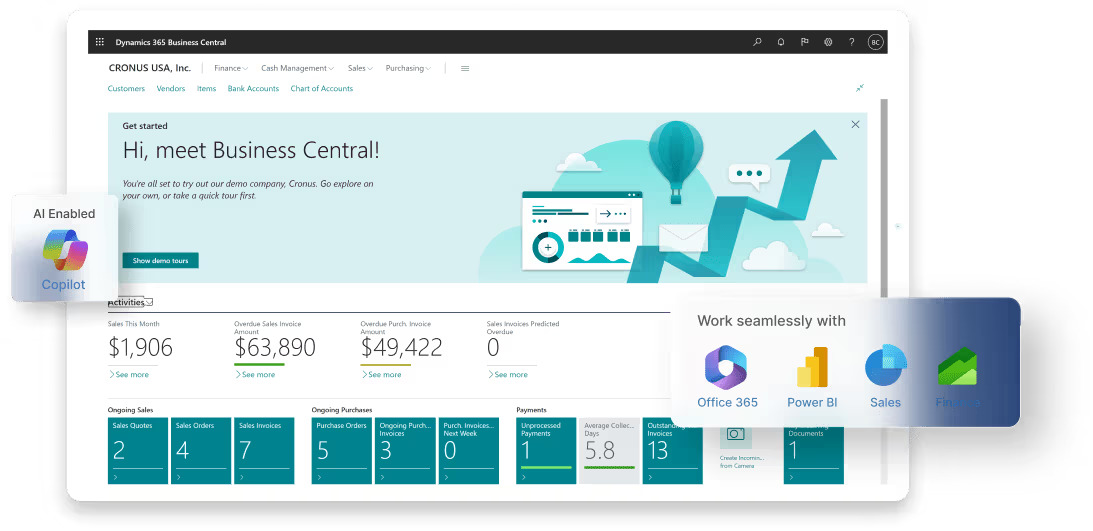ERP Implementation in 90 Days? Here’s How to Make it Work with Business Central ERP
Are you imagining a successful ERP implementation in 90 days? For many businesses, the idea of rolling out a new ERP system—particularly something as robust as Microsoft Dynamics 365 Business Central—in just three months can seem ambitious. But with the right approach, accelerated ERP implementation isn’t just possible; it’s achievable and advantageous.
In this post, we’ll explore a proven ERP project plan for a 90-day Business Central ERP implementation, reveal essential go-live strategies, and show you how to get started with an ERP readiness assessment. Ready to fast-track your digital transformation? Let’s dive in.
Why Choose Dynamics 365 Business Central?
Dynamics 365 Business Central ERP is Microsoft’s cloud ERP solution for SMBs looking for an all-in-one platform. Whether you need to streamline finance, supply chain, sales, or operations, Business Central delivers the agility and scalability modern businesses demand.

Plus, its cloud-native architecture supports rapid ERP rollout with easier integration, data migration, and user training than traditional on-premises systems.
The 90-Day ERP Deployment Timeline
A 90-day ERP deployment is all about clear goals, documented processes, and a sharp focus on business value. Here’s a simple ERP implementation roadmap using Business Central:
1. ERP Readiness Assessment (Week 1)
- Perform an ERP readiness call to gauge your organization’s preparedness.
- Identify business processes to optimize.
- Assess data migration needs and current system integrations.
2. Project Planning & Configuration (Weeks 2-3)
- Build your ERP project plan with defined roles, timelines, and deliverables.
- Configure Business Central modules according to the requirements checklist.
3. Data Migration & Integration (Weeks 4-6)
- Migrate legacy data to Business Central, ensuring data integrity and mapping.
- Integrate existing apps for seamless workflows.
4. Training & UAT (Weeks 7-9)
- Roll out ERP training sessions for end-users.
- Conduct User Acceptance Testing (UAT) for real-world validation.
5. Go-Live & Post-Launch Support (Weeks 10-12)
- Prepare for a successful ERP go-live strategy.
- Monitor system usage, resolve early challenges, and fine-tune your deployment.
ERP Implementation Success: Best Practices
- Accelerated ERP implementation is realistic with expert guidance and a crystal-clear project scope.
- Use a Business Central implementation checklist from the start.
- Ensure change management and user training are built into your plan.
- Leverage cloud ERP for SMBs for faster, more adaptive deployment.
- Continuously measure KPIs and track progress from kickoff to ERP go-live.
Avoiding Common ERP Implementation Challenges
Even in an ambitious 90-day window, you can overcome these obstacles:
- Poor requirements gathering—solve this with a detailed ERP readiness assessment.
- Slow data migration—plan thoroughly and use built-in Business Central tools.
- Lack of user adoption—prioritize ERP training and clear communication.
Book Your Free ERP Readiness Call Today
Curious if your organization is ready for a fast-track ERP implementation? Want a personalized ERP readiness call for Business Central? Our experts will help you:
- Evaluate your current systems
- Identify major pain points and opportunities
- Map out your unique ERP implementation steps
Book your free ERP readiness consultation now at Dynamics Square UK and start your journey to a successful 90-day Business Central go-live!